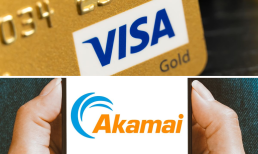In trade finance on a global level, there’s a form of fraud known to exist but is hard to quantify because it’s only discovered when someone gets caught.
It’s called duplicate financing fraud and it works like this: Because lenders have their own data systems and don’t share customer info, bad actors have been able to secure duplicate financing in the country of origin, the destination country as well as in a financial center too — all on the same order.
“Say I’ve got a receivable for $1 million,” Jesse Chenard, CEO at MonetaGo, explained in an interview with PYMNTS. “I take it to bank No. 1 over here, take it to bank No. 2 over there, maybe take it to the overseas bank that the shipment is ultimately going to, and they are able to finance it in multiple venues.”
That’s textbook duplicate financing and it happens at both the low end of the trade spectrum in marketplaces and at the higher end in commodities trading scandals.
Chasing the Unknown
“In certain cases, it’s an ordinary course of business,” Chenard said. “It’s a problem, but nobody really knows how big the problem is.”
Advertisement: Scroll to Continue
MonetaGo, a financial technology solutions provider, announced on Sept. 12 a new platform to combat financing fraud in trade finance on a global level. Dubbed the MonetaGo Secure Financing Platform, it contributes to the global approach that is needed to comprehensively mitigate risk.
“When we introduced this capability, it’s kind of a new twist on how you can communicate across these other trade networks, financeers, regional networks and what have you,” Chenard said.
A Network of Networks
The pandemic shined a light on how many paper-based processes there are and the lack of digitization in the space and in banking in general.
Financiers have also learned that if each trade network is built as an island or a silo, bad actors can simply take the same invoice to another network.
“We sort of walk them through how this works, not just on a domestic level but also on a global level, and one thing that becomes very apparent is that you need a network of networks amongst us,” Chenard said.
Read also: MonetaGo Combats Financing Fraud With New Global Offering
In addition to finding duplicate financing on invoices, this global solution looks at bills of lading, purchases, warehouse receipts and other things.
“So, if these things are implemented and taken up, even if sort of the majority of top players adopt it, it arrests a large problem,” Chenard said.
Solving that problem and de-risking the space by assuring financiers that no one else is financing the same thing will enable safe, affordable access to credit.
Banks will be able to open their book of business to smaller accounts because it will be automated and won’t have the large cost of Know Your Customer (KYC) and compliance.
“So, it’s kind of twofold,” Chenard said. “We know that we’re going to be able to arrest a lot of duplicate financing attempts that occur in the market today, but also, long term, we feel that this product will enable more financings of this kind to occur, and in a more cost-effective manner and fair manner.”
Digitizing Workflows
When the MonetaGo Secure Financing Platform gets adopted at scale, Chenard said, this form of fraud will be more often identified. People who perpetrate it will quickly realize that something is happening on the backend and it will end.
“This will ultimately go to zero, which is a good thing,” Chenard said.
The solution is purchased by financiers, many of whom he said have already agreed in this case to come together on a common platform with their competitors to share information in a manner that is hashed and discreet so that there are no privacy or competitive concerns.
See also: MonetaGo, GUUD Team On Secure Transactions
It is available on a per-transaction basis and both small financiers and large ones pay the same amount. The idea is to open up this global solution to everyone.
“We’ve seen interest from regulators, governments and the banks themselves — you know, the guys who have lost billions of dollars, they feel it the most,” Chenard said. “So, it’s been a great product for us to go on and say, ‘Hey, would you like to eliminate or reduce fraud in your trade finance division?’ Overwhelmingly, the answer is always yes.”
In the past, the problem in trade finance on a global level was that everything was written on papers that could never be brought together and checked. Today, when everyone has a smartphone, things are different. With this solution, it will be easier to catch fraud.
“The push to digitize these workflows end-to-end and then introducing these common linking communication elements is really going to take it down from, ‘Oh, we only catch single-digit percentages’ to ‘We’ve pretty much eliminated it.’”




